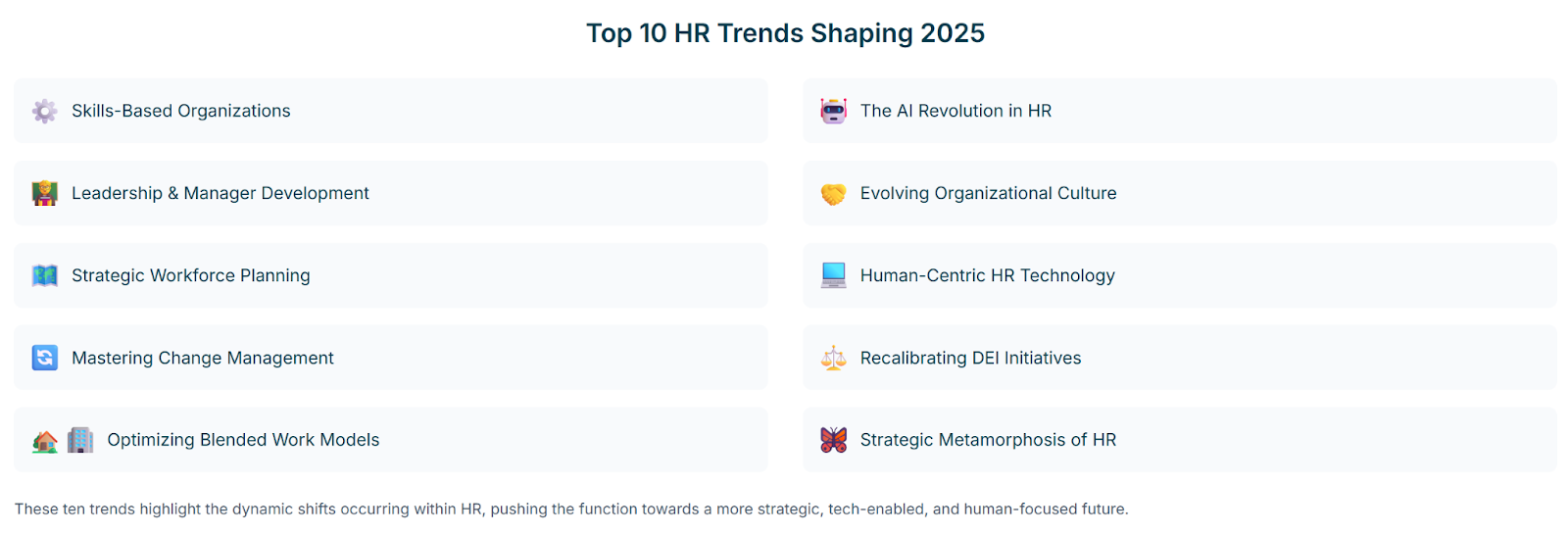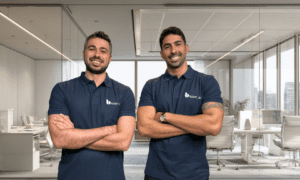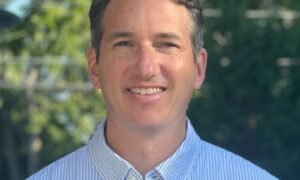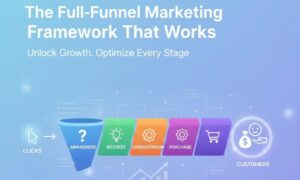Victor Artmanis, Chair of the Board at HRizon Association, is a man who has seen the tides of people management turn many times. With a quarter-century of experience steering human capital in vast governmental organizations across Uzbekistan and Lithuania, often during periods of profound national transformation, he brings a uniquely grounded and panoramic perspective to the often-frenzied discussions about the future of work. His insights are not born from textbooks alone, but from the complex realities of implementing change within intricate, human-dense systems. We sat down with him to understand how HR is evolving beyond the buzzwords, into a new era shaped by intelligent machines and ever-shifting human needs.
Q: Mr. Artmanis, thanks for making time. Your career spans some truly transformative periods in different national contexts. From your vantage point, how would you characterize the current climate for HR professionals? Is it a perfect storm, a period of overwhelming flux, or a challenging, perhaps unprecedented, opportunity?
Victor Artmanis: It’s certainly a period of intense recalibration, perhaps the most significant I’ve witnessed. ‘Recalibration’ not just of processes, but of HR’s very identity and purpose. For years, HR has strived to be a strategic partner. Now, the very definition of ‘strategic’ is being rewritten by forces like pervasive artificial intelligence, profound demographic shifts – aging workforces in some regions, youth bulges in others – and fundamentally altered employee expectations about work’s role in their lives. The challenge lies in not just reacting to these individual waves, but in understanding their confluence, their combined power. The opportunity, and it is a substantial one, is for HR to finally, truly, become central to an organization’s sustainable success, not as a support function operating in a silo, but as a core architect and driver of its future. This architectural role means HR must be involved in designing the very structure of work, the flow of talent, and the cultural underpinnings that allow an organization to thrive amidst this constant change.
Q: You mention AI, and its rapid ascendancy is undeniable. We’re moving beyond AI as a simple automation tool towards discussions of ‘agentic’ AI, systems that might collaborate with a degree of autonomy. How does that prospect shift the ground beneath HR’s feet, particularly in traditionally more structured environments like the governmental organizations you’re deeply familiar with?
Victor Artmanis: The initial wave of AI in HR was about efficiency – automating payroll, filtering thousands of applications, managing leave requests. That was the low-hanging fruit, and valuable in its own right for freeing up human capacity. This next phase, what some are indeed terming ‘agentic AI,’ where systems can potentially reason, plan, and act with a degree of autonomy to complete complex tasks, is a different beast entirely. It’s less about a tool and more about introducing a new kind of… let’s call it a ‘digital actor’ into the workplace. Many organizations, and HR leaders within them, are taking something of a ‘breather’ right now, a pause in the headlong rush of AI adoption. This isn’t a slowdown born of fear, but of prudence. They are preparing for this next significant leap, understanding that integrating such sophisticated AI requires more than just technical know-how.
In large, established organizations, particularly governmental ones with their inherent complexities and public accountability, the integration of such systems requires immense foresight and meticulous planning. It’s not just plugging in new software. It’s about fundamentally redesigning workflows, rethinking roles and responsibilities, and, crucially, establishing robust, transparent ethical governance frameworks before widespread deployment. HR must be at the forefront of asking: how do we ensure these intelligent agents genuinely enhance human capability and improve decision-making, rather than diminish or obscure it? What are the clear lines of accountability when an AI is part of a decision chain that impacts an individual’s career or access to services? How do we audit these systems for embedded biases that could perpetuate or even exacerbate existing inequalities? These are not trivial questions; they go to the heart of organizational justice and trust.
Q: That raises critical questions about skills. If AI is poised to take on more complex analytical and even some decision-making tasks, what does the human workforce need to bring to the table? What new skill sets become paramount, and how can organizations, especially large ones, effectively cultivate them when simultaneously facing widespread talent shortages for existing roles?
Victor Artmanis: The narrative around skills is indeed shifting decisively from a primary reliance on formal credentials and past job titles towards demonstrable, transferable capabilities. The most critical skills are, perhaps paradoxically in this age of technology, the most intrinsically human: profound adaptability and learning agility, sophisticated critical thinking, the ability to navigate ambiguity and solve novel, complex problems, high levels of emotional intelligence for collaboration and leadership, and genuine creativity. These are skills that AI, in its current and foreseeable form, cannot replicate authentically. They are the differentiators.
The talent shortage is very real, but it’s often a shortage of these adaptive and transformative skills, as much as it is a shortage of specific technical expertise. Organizations, including governmental bodies which often have a societal mandate for workforce development, must invest massively and strategically in continuous learning ecosystems. This isn’t about a mandatory annual training course catalogued away. It’s about fostering a deeply embedded culture where learning, unlearning, and relearning are constant, valued, and accessible. This involves personalized learning paths, often AI-curated, micro-learning modules that fit into the flow of work, experiential learning opportunities, robust mentorship programs, and creating psychological safety for experimentation and even failure, which is a crucial part of learning.
Cultivating these skills in large, sometimes more rigid, governmental structures presents its own unique challenges. It requires a concerted effort to shift entrenched mindsets, to move from a culture of compliance to one of curiosity and continuous improvement. This is where the “skills-based organization” model becomes so potent. It’s about mapping the skills you have, identifying the skills you’ll need, and then building bridges – through development, through strategic hiring, through innovative internal mobility programs that look beyond traditional career ladders. It allows you to see talent not as fixed in a role, but as a dynamic pool of capabilities that can be deployed flexibly.
Q: On the topic of workforce dynamics, the pandemic undeniably normalized remote work, but we’re now seeing a complex counter-narrative: concerns about productivity dips, documented instances of employees discreetly juggling multiple full-time remote jobs, and subsequent, sometimes quite forceful, ‘back to office’ mandates. How do you see this particular tension playing out in the longer term? Is there a sustainable middle ground, or are we in for a protracted tug-of-war?
Victor Artmanis: The remote work experiment was, for many, a forced necessity that unexpectedly revealed significant possibilities for flexibility and work-life integration. The “cheating” phenomenon, or employees working for multiple companies simultaneously, while perhaps not as widespread as some alarmist headlines suggest, does point to potential underlying issues: disengagement, a perceived lack of meaningful connection to a primary employer, insufficient compensation, or even a fundamental misunderstanding of contractual obligations. The knee-jerk reaction of a full, uncompromising return-to-office often misses the mark. It’s frequently an attempt to regain a perceived sense of control and visibility, rather than a strategic move to address underlying issues of trust, engagement, or the very design of work.
The sustainable path, I believe, lies in intentionality and segmentation. Why do we truly need people physically present in an office? Is it for deep, collaborative brainstorming that thrives on spontaneous interaction? Is it for fostering innovation through serendipitous encounters? Is it critical for onboarding new talent and effectively instilling organizational culture and values? Is it necessary for specific types of secure work? If the answers are yes, then the office environment and the work designed for it must genuinely and demonstrably support those objectives. A blanket mandate that ignores individual roles, team dynamics, and personal circumstances rarely yields optimal results and can breed resentment.
Instead, we’ll see the continued evolution of more nuanced, role-dependent, and team-specific hybrid models. But these require sophisticated management capabilities, exceptionally clear communication protocols, and a robust focus on outcomes and impact, not just on physical presence or hours clocked. HR has a delicate and crucial balancing act here – advocating for flexibility where it makes sense for both the employee and the organization, while ensuring the business needs for cohesion, collaboration, innovation, and productivity are demonstrably met. The challenge of maintaining a strong, unified organizational culture when a significant portion of the workforce is distributed is substantial. It requires deliberate, consistent effort in communication, in creating virtual spaces for connection, and in ensuring equitable opportunities for visibility and advancement, regardless of an employee’s primary work location.
Q: Amidst all this profound flux, what is the specific role of an organization like the HRizon Association? How are you helping HR professionals, many of whom are in very diverse organizational and national contexts, navigate these turbulent waters?
Victor Artmanis: HRizon aims to be a lighthouse, a reliable point of reference in these often-foggy conditions. In times of rapid, complex change, professionals, no matter how experienced, need a community – a trusted space to share experiences, learn from the successes and missteps of peers, and access distilled wisdom that cuts through the noise. We focus on translating global trends – like the rise of agentic AI, the intricacies of skills-based organizational design, or the evolving landscape of employee well-being – into practical, actionable insights for our members. This is particularly important when considering the specific contexts of regions like Eastern Europe and Central Asia, which have their own unique economic trajectories, demographic profiles, and cultural nuances.
This means facilitating candid discussions on the ethical implementation of AI, not just its technical aspects. It means sharing best practices for developing and retaining talent in a skills-first environment. It involves providing frameworks for developing resilient and adaptive leadership, which is so critical right now. We run workshops, for instance, on AI ethics tailored for HR, forums on designing effective and equitable hybrid work models, and we commission or share research into regional skill gaps and talent mobility patterns. We believe that by fostering a strong, collaborative network of informed and forward-thinking HR professionals, we can collectively elevate the profession and help organizations across different sectors build more adaptive, resilient, and genuinely human-centric workplaces. It’s about equipping them not just with knowledge, but with the strategic foresight and the confidence to lead effectively through this era of profound uncertainty.
Q: You’ve touched on leadership repeatedly. Developing effective leaders and managers remains a top priority year after year in HR surveys, yet many initiatives seem to fall short, with managers often reporting feeling overwhelmed and ill-equipped. How can organizations finally break this cycle, especially as managerial roles become even more complex with the integration of AI into teams and the ongoing management of hybrid, distributed workforces?
Victor Artmanis: The managerial role has indeed become incredibly demanding, a focal point for immense pressure. They are expected to be expert coaches, empathetic mentors, sharp strategists, visible culture champions, and now, savvy integrators of new technologies like AI, all while consistently delivering on their core operational targets. The sense of overwhelm is palpable and pervasive. Traditional, often episodic, top-down leadership training programs frequently fail because they don’t address the systemic pressures managers face, nor do they provide the continuous, contextualized support needed.
What’s urgently needed is a more holistic and sustained approach. This certainly involves re-evaluating managerial spans of control and responsibilities – are we asking too much of one individual? It means providing them with better tools and resources, which can include AI-driven insights for team management and development, provided these are used ethically and transparently. It also necessitates fostering strong peer support networks and communities of practice where managers can share challenges and solutions. Crucially, leadership development itself must focus intensely on building resilience, profound empathy, sophisticated change leadership capabilities, and the ability to foster psychological safety within their teams. And, perhaps most importantly, senior leadership must consistently model these behaviors. If we expect managers to cultivate an engaging, supportive, and adaptive culture for their teams, they need to experience that very culture themselves, flowing authentically from the top of the organization. In a skills-based organization, managers also need new competencies in assessing, developing, and mobilizing skills within their teams, moving beyond traditional performance reviews to more continuous, development-focused conversations. AI can potentially assist here, by providing data on skill gaps or suggesting learning resources, but the human element of coaching and motivation remains paramount for the manager.
Q: The research material also highlighted a “recalibration” of Diversity, Equity, and Inclusion (DEI) initiatives, with some CHROs anticipating companies might scale back. This seems counterintuitive given the societal push for greater inclusivity. What’s your perspective on this trend? Is it a concerning retreat, or a necessary evolution towards more impactful and sustainable approaches?
Victor Artmanis: This is a very sensitive and complex area. The “recalibration” observed is indeed a significant development. It’s driven by a confluence of factors: shifting political climates in some regions, economic pressures leading to budget scrutiny across all functions, and, in some instances, a perception that certain DEI initiatives haven’t delivered measurable impact or were perceived as performative rather than transformative. There’s also a segment of managers and employees who may have felt alienated by particular approaches.
However, I wouldn’t necessarily characterize this as a wholesale retreat from the core principles of DEI, at least not in organizations that are genuinely committed to a fair and equitable workplace. Instead, I see it more as a potential, and perhaps necessary, evolution towards more deeply integrated, strategically aligned, and demonstrably impactful approaches. The focus may be shifting from standalone, sometimes high-profile but isolated, programs towards embedding inclusive practices into the very DNA of talent management processes – from recruitment and promotion to development and compensation. There’s a growing call to ensure DEI efforts are data-driven, that their impact can be measured, and that they contribute to tangible business outcomes as well as societal good. The conversation might also broaden to encompass a wider array of diversity dimensions, including socioeconomic background, cognitive diversity, and varying life experiences. HR leaders must navigate this with extreme care, ensuring that any recalibration doesn’t signal a diminished commitment but rather a smarter, more sustainable strategy for fostering truly inclusive environments where everyone can thrive and contribute their best.
Q: Another important area mentioned is Strategic Workforce Planning (SWP). For years, it’s been an HR aspiration, but often reactive. Now, it’s described as evolving into a dynamic, skills-powered capability. How crucial is this evolution, especially when long-term predictions about specific job roles are so difficult in an AI-driven world?
Victor Artmanis: The evolution of Strategic Workforce Planning from a static, annual headcount exercise to a dynamic, continuous, and skills-powered capability is not just crucial; it’s fundamental to organizational survival and success in this era. The sheer pace of technological change, particularly with AI, means that predicting specific job roles five or ten years out with pinpoint accuracy is indeed a fool’s errand. However, that doesn’t negate the need for planning; it redefines it.
Effective SWP today is less about infallible long-range forecasting and more about building organizational agility and resilience. It’s about understanding current skills inventories with a high degree of granularity, anticipating directional shifts in skill demands based on strategic business objectives and technological trajectories, and then building the capacity to adapt quickly. This means identifying core, transferable skills that will retain value across different roles and technological waves. It means investing in learning agility as a meta-skill across the workforce. It involves scenario planning – what if this technology accelerates? What if that market shifts? – and developing flexible talent strategies that can accommodate various futures. This includes looking at blended workforce models – full-time employees, contractors, gig workers, even AI agents – and how to orchestrate them effectively. HR’s role is to be the custodian of this dynamic capability, using data analytics to provide insights, partnering closely with business leaders to align talent strategy with business strategy, and ensuring the organization has the human capital architecture to pivot as needed.
Q: Looking towards 2025 and beyond, amidst all these profound changes, what makes you optimistic about the future of HR, and what’s the one trend or challenge that you believe requires the most urgent, thoughtful, and concerted attention from the profession globally?
Victor Artmanis: My optimism, and it is a resilient optimism, stems from the inherent adaptability and potential of people, and the slowly but surely increasing recognition at the highest levels of organizations that human capital is the ultimate, sustainable differentiator. Technology can be bought, strategies can be copied, but a truly engaged, skilled, and adaptive workforce is unique and incredibly powerful. HR is uniquely positioned to be the architect and nurturer of that human potential. The profession is being compelled to upskill, to become more data-savvy, more business-literate, more strategic – and this transformation, while challenging, is invigorating.
The most urgent challenge, the one that I believe requires the most profound, thoughtful, and concerted attention from the HR profession globally, is navigating the human-AI interface with deep wisdom and unwavering ethical foresight. It’s not merely about deploying the latest AI tools; it’s about thoughtfully and intentionally integrating this powerful technology into the very fabric of our organizations in a way that enhances human dignity, fosters genuine growth and development, promotes fairness, and drives equitable outcomes. This goes to the heart of job design, performance evaluation, career development, employee well-being, and fundamental questions of bias and control. If we, as HR professionals, can lead our organizations to get that crucial interface right – ensuring AI augments human capability rather than devalues it, that it empowers rather than controls – then we can help create workplaces that are not only more productive and innovative but also more fulfilling, just, and ultimately, more human. That, for me, is the central and most defining task for HR in the coming years, and its successful execution will be key to HR’s strategic metamorphosis into a true business catalyst. HRizon as professional association for HR is here to support community in the upcoming transformation.





























